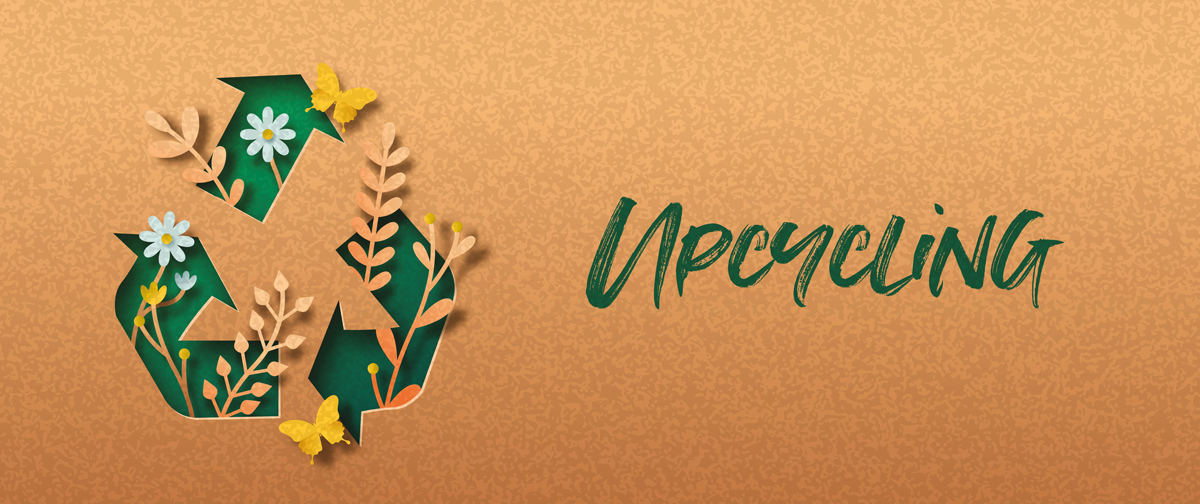/ Legal challenges associated with upcycling
September 6, 2024Transforming what already exists into something innovative is the current trend. Seen as innovative reuse, upcycling has marked a turning point in the fashion industry.

Laura Hernández Bethermyt
Associate
Upcycling, or creative recycling, is the art of transforming what you no longer use into something surprisingly new and valuable. Unlike conventional recycling, which usually breaks down materials to make something entirely new, upcycling focuses on revitalising the original object, elevating its quality, functionality or style without dismantling it completely.
Established fashion houses and emerging designers are already incorporating this trend. They are adapting their strategies for upcoming collections by considering innovative changes that optimise the use of existing materials. By taking advantage of already available resources and minimising the generation of textile waste, these designs are contributing to more sustainable production. This adaptation reflects a growing awareness of the importance of reducing the environmental impact of the fashion industry. This movement towards more conscious and responsible fashion is setting new standards for design and production, ushering in an era where innovation and sustainability go hand in hand.
I will try to explain what the legal challenges of this trend are.
When talking about transforming objects, there is a significant difference between using pieces that are destined for discard and those that are trademarked, such as logos, designs or trade names protected by Intellectual Property rights. The question is: where do we draw the line between legitimate use and possible infringement of these rights? At what point does legal protection end?
While upcycling and creative reuse offer new lives to discarded items, the challenge arises when these transformed pieces include elements that are under IP protection. For example, reusing a trademarked product may require care not to infringe the proprietary rights of the trademark holder and its components. This includes everything from the original design sketch and logo that may appear in the print, to the name of the brand that produces the piece. Each may have specific legal protection, which guarantees the creator’s rights to their work.
When an alteration or modification is made to a garment, a critical question arises: is it an infringement of Intellectual Property rights or simply a legitimate transformation of the work? The answer depends on the nature and extent of the changes made. For example, modifying a design or altering the logo may have legal implications if done without authorisation, as it may constitute an infringement of copyright or trademark. On the other hand, some changes may be sufficiently creative and substantial not to be considered an infringement, but a new derivative work.
It is therefore essential to carefully assess any transformation of a garment in terms of how it affects the protected elements. This involves considering whether the alteration respects the rights of the original trademark and design owners, and whether it complies with the legal regulations governing intellectual property in each specific case. The key is to strike a balance between innovation and respect for property rights, ensuring that any modifications are made within the legal boundaries.
There is little or no legislation on the alteration and modification of garments. However, the debate on this topic is wide-ranging and pervasive in the fashion industry. There are numerous pronouncements and opinions from different fashion houses and designers, often reflecting a variety of both positive and negative perspectives.
These statements by fashion brands range from the protection of their original designs and logos to the adaptation and reinterpretation of their creations by third parties. Some fashion houses strongly defend their intellectual property rights, arguing that any alteration or use of their designs without permission is an infringement that affects their reputation and control over their works. On the other hand, others take a more flexible stance, and consider certain modifications as a legitimate form of homage or creative reinterpretation. This context reveals a lack of clear regulations to guide the use and transformation of textile pieces, and often leaves the resolution of these conflicts to private negotiations and court decisions. The absence of legislation or regulation to address these issues creates uncertainty in the industry and raises questions about how to balance the protection of creators’ rights with freedom of expression and design innovation.